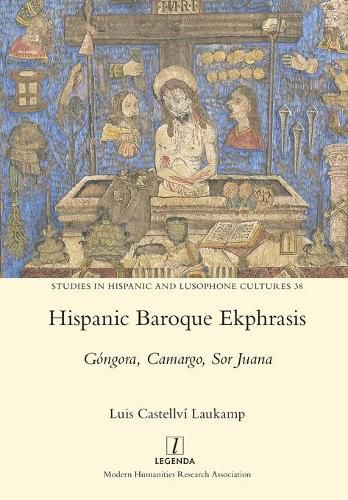Readings Newsletter
Become a Readings Member to make your shopping experience even easier.
Sign in or sign up for free!
You’re not far away from qualifying for FREE standard shipping within Australia
You’ve qualified for FREE standard shipping within Australia
The cart is loading…






Analyses of early modern Latin American literature have often portrayed it either as a continuation of the Iberian tradition, or as a reaction against Spanish imperialism. However, such overgeneralisations cannot account for the complex corpus of writing produced in the ‘New World’. This is particularly true for the study of Gongorism, the new style developed by the Spanish author Luis de Gongora (1561-1627), which transformed Baroque poetics on both sides of the Atlantic.
In this monograph, Luis Castellvi Laukamp examines Gongora’s impact on the visual and artistic imagination of two major Spanish American authors: Hernando Dominguez Camargo (1606-1659) and Sor Juana Ines de la Cruz (1651-1695). Its implications extend beyond the Hispanic world to inform broader discussions about poetic influence, transmission of culture, and the relationship between art and poetry.
Luis Castellvi Laukamp completed his PhD at the University of Cambridge and is now a Lecturer in Spanish Cultural Studies at the University of Manchester.
$9.00 standard shipping within Australia
FREE standard shipping within Australia for orders over $100.00
Express & International shipping calculated at checkout
Analyses of early modern Latin American literature have often portrayed it either as a continuation of the Iberian tradition, or as a reaction against Spanish imperialism. However, such overgeneralisations cannot account for the complex corpus of writing produced in the ‘New World’. This is particularly true for the study of Gongorism, the new style developed by the Spanish author Luis de Gongora (1561-1627), which transformed Baroque poetics on both sides of the Atlantic.
In this monograph, Luis Castellvi Laukamp examines Gongora’s impact on the visual and artistic imagination of two major Spanish American authors: Hernando Dominguez Camargo (1606-1659) and Sor Juana Ines de la Cruz (1651-1695). Its implications extend beyond the Hispanic world to inform broader discussions about poetic influence, transmission of culture, and the relationship between art and poetry.
Luis Castellvi Laukamp completed his PhD at the University of Cambridge and is now a Lecturer in Spanish Cultural Studies at the University of Manchester.